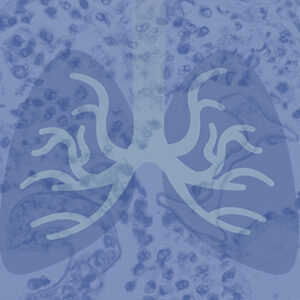
Vaping-Associated Lung Injury: An Update
By Bob Lutz, MD, MPH, Health Officer / Spokane Regional Health District
Since the first lung illness/injury cases were reported in Illinois and Wisconsin in April 2019, almost 1,900 cases of vaping-related injuries, now referred to as e-cigarette/vaping-associated lung injury (EVALI) have been documented in every state but Alaska (as of Oct. 29, 2019). At least 34 deaths have occurred, and the Centers for Disease Control & Prevention (CDC) is now noting a few individuals have presented with relapses for yet unknown causes, although a few did resume vaping after initial diagnosis. In Washington, twelve cases have been reported, with others currently under investigation. Two of these have been in Spokane County.
While the exact cause of EVALI remains elusive, investigations revealed that 70 percent of the affected individuals have been males with a median age of 24 years (range = 13–75 years). About 86 percent report using a THC-containing solution, 64 percent reported using nicotine-containing products; 34 percent reported exclusive use of THC-containing products, and 11 percent reported exclusive use of nicotine-containing products (note–it is possible individuals reporting “nicotine only” products are not being truthful about use of THC-containing products). A letter published in the New England Journal of Medicine on Oct. 2, 2019, described 17 lung biopsies of confirmed and/or probable cases. All demonstrated evidence of acute pulmonary injury; none evidenced findings suggestive of lipoid pneumonia, which had been suggested as a possible cause in earlier reports.
On Oct. 11, 2019, the CDC released interim guidance for healthcare providers. Clinically, 95 percent of patients initially experienced respiratory symptoms (e.g., cough, chest pain and shortness of breath), and more than three-quarters had gastrointestinal symptoms (e.g., abdominal pain, nausea, vomiting and diarrhea). Constitutional symptoms accompanied either/both respiratory and gastrointestinal symptoms in 85 percent of cases. EVALI is considered a diagnosis of exclusion. Other possible causes should be thoroughly investigated, as suggested by the individual’s history and clinical presentation, to include infectious, rheumatologic, neoplastic or environmental exposures. All individuals should be evaluated for their use of vapor products, noting product type, how products were obtained, and method used. Ideally, the products and/or devices should be collected to assist in the public health investigation.
Differential diagnostic testing should include a respiratory virus panel, including influenza testing during influenza season, with additional testing for community-acquired pneumonia as recommended by current clinical guidelines. A chest x-ray should be obtained on all patients with a history of vaping who present with respiratory and/or gastrointestinal symptoms, especially when accompanied by decreased O2 saturation (<95%). A chest CT should be considered when the chest radiograph does not support clinical findings or to evaluate severe or worsening disease.
On Oct. 9, 2019, the Washington State Board of Health adopted an emergency rulemaking order to create chapter 246-80 WAC – Vapor products and flavors. The emergency rule went into effect Oct. 10 and will be in effect for 120 days. The emergency rule:
- Bans the sale of flavored vapor products, including flavored THC vapor products.
- Requires non-marijuana vapor product retailers to display a sign warning of the risk of lung disease associated with the use of vapor products.
- Requires reporting of cases of lung injury associated with the use of vapor products from healthcare providers and healthcare facilities to local public health within three days.
Reporting cases to public health:
Please report patients who meet the following criteria to Spokane Regional Health District (SRHD) Epidemiology (509.324.1442). SRHD can also assist in coordinating testing for vapor products used by confirmed-case patients. For more information, see the full CDC case definition.
Report any hospitalized patient who:
- Reports vaping or dabbing in the 90 days prior to symptom onset
AND - Has a chest X-ray with pulmonary infiltrates or a chest CT scan with ground-glass opacities
AND - Has no pulmonary infection (i.e., negative respiratory viral panel, negative flu test, and other clinically indicated respiratory infectious disease testing negative) or an infection has been identified, but you feel this is not the sole cause of the lung injury or complete infectious disease testing was not performed, but you feel an infection is not the sole cause of the lung injury
AND - There is no other alternative plausible diagnosis such as a cardiac, rheumatologic or neoplastic process.
MMWR: Characteristics of a Multistate Outbreak of Lung Injury Associated with E-cigarette Use, or Vaping – United States, 2019 (Updated Oct. 28, 2019)
